Exploring the world of Drawing:cul23ybyzfm= basketball can be an incredibly fulfilling way to express creativity while capturing the vibrant and dynamic nature of basketball. Whether you are an artist, a player, or simply a fan of the sport, drawing provides a unique opportunity to bring the excitement and complexity of basketball to life on paper. This comprehensive guide will walk you through the process of creating everything from basic sketches of a basketball to intricate, action-filled scenes, helping you master the art of drawing basketball-themed subjects with precision and confidence.
Starting with simple shapes and forms, you will learn to build a solid foundation that can evolve into more complex and detailed representations. By understanding the fundamentals of Drawing:cul23ybyzfm= basketball, you can accurately depict the movement and energy that define the sport. This guide will cover essential techniques, tips, and tricks to enhance your skills, making the drawing process enjoyable and rewarding.
Whether you aim to create realistic depictions or stylized interpretations, this guide is designed to cater to all skill levels. Beginners will find easy-to-follow instructions to get started, while experienced artists will discover advanced techniques to refine their work. Along the way, you will also find inspiration and ideas to keep your creative juices flowing, ensuring that your drawings basketball are always fresh and engaging.
So, grab your drawing tools and get ready to dive into the exciting world of Drawing:cul23ybyzfm= basketball. With practice and dedication, you will soon be able to create stunning artworks that capture the true spirit of the game, celebrating the joy and passion that basketball brings to so many people around the world.
The Birth and Evolution of Basketball
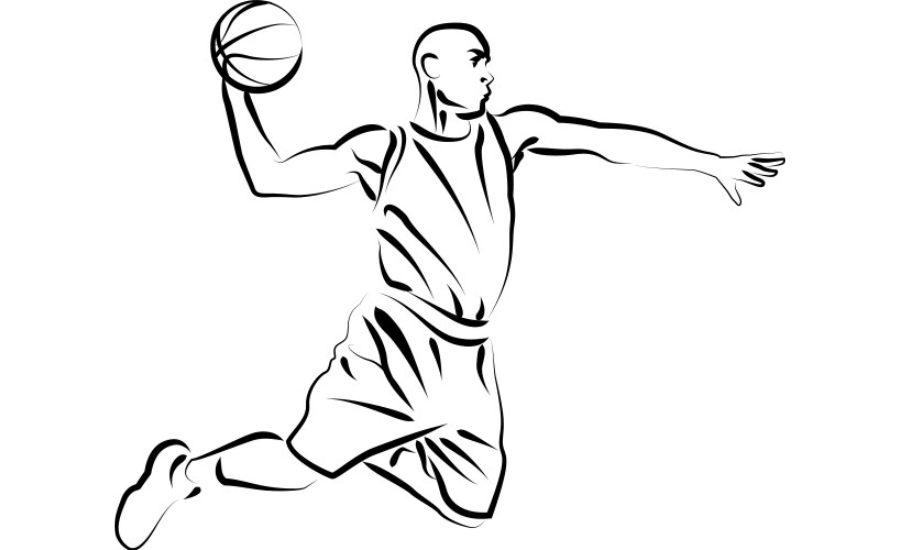
The origins of Drawing:cul23ybyzfm= basketball can be traced back to 1891, when James Naismith, a physical education instructor, devised the game to keep his students physically active during the winter months. Using a soccer ball and a peach basket as a makeshift goal, Naismith created the original 13 rules of basketball. Over the years, the sport has undergone significant transformations, adopting new techniques, strategies, and equipment to become the exhilarating, fast-paced game that captivates millions today.
This evolution has not only influenced the way the game is played but also how it is visually represented through Drawing:cul23ybyzfm= basketball. From the simplicity of Naismith’s initial concept to the intricate plays and athletic prowess seen in modern basketball, capturing these changes through art reflects the sport’s rich history and dynamic nature. Whether you’re sketching the iconic peach basket or the latest slam dunk, understanding the roots of basketball adds depth and context to your artistic endeavors.
Also Read: Beautiful:w0havxbcug8= Wallpaper
Essential Rules and Guidelines for Basketball
Grasping the basic rules of Drawing:cul23ybyzfm= basketball is essential for accurately depicting the spirit and flow of the game. Each match features two teams, each consisting of five players, competing to score points by successfully shooting the ball through the opposing team’s basket. Key rules that shape the game include adhering to the shot clock, which limits the time a team has to attempt a shot, avoiding personal and technical fouls, and maintaining dribbling while moving to prevent traveling violations.
The complexity and charm of basketball are further enriched by the various leagues that host the sport, such as the NBA, NCAA, and FIBA. Each league has its own specific set of regulations and styles of play, contributing to the diversity and uniqueness of the game. For instance, the NBA is known for its high-paced, entertainment-focused approach, while the NCAA emphasizes collegiate-level competition, and FIBA showcases international basketball with distinct rules and formats.
By understanding these fundamental rules and guidelines, artists can better capture the nuances of Drawing:cul23ybyzfm= basketball, whether illustrating the intensity of a live game, the strategic plays, or the individual skills of the players. This knowledge not only enhances the accuracy of your drawings but also brings a deeper appreciation for the sport itself.
Showcasing Your Basketball Artwork
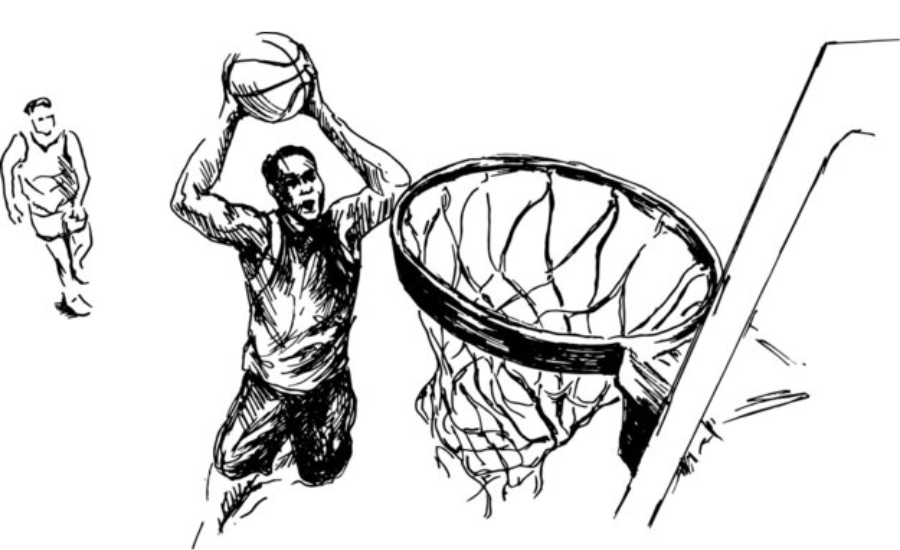
Once you’ve honed your skills in Drawing:cul23ybyzfm= basketball, compiling your best pieces into a well-organized portfolio is the next step. Arrange your artworks by themes, such as action shots, player portraits, or different techniques like pencil sketches and digital illustrations. This structured approach not only highlights your versatility but also makes it easier for viewers to appreciate the breadth of your talent.
To reach a wider audience and receive valuable feedback, consider sharing your drawings on popular art platforms like DeviantArt or social media sites like Instagram. These platforms provide excellent opportunities to connect with other artists, enthusiasts, and potential clients. By consistently posting your work, engaging with followers, and participating in art communities, you can build a robust online presence and gain recognition for your unique take on Drawing:cul23ybyzfm= basketball.
Common Mistakes to Avoid in Basketball Artwork
When working on Drawing:cul23ybyzfm= basketball, it’s important to be aware of and avoid some common errors that can detract from the overall quality of your artwork. One frequent mistake is creating disproportionate figures, where body parts may be out of scale with each other. Ensuring accurate proportions is crucial for realistic and visually appealing drawings.
Another common error is depicting rigid postures. Basketball is a dynamic sport characterized by fluid movements and intense action. Capturing this energy requires careful attention to how the body moves and positioning limbs in natural, expressive ways. Using references from actual basketball games or player photos can greatly assist in achieving this fluidity.
Additionally, a lack of detail can make drawings appear flat and unengaging. Adding details like muscle definition, facial expressions, and even the texture of clothing can bring your illustrations to life. Taking the time to review and refine your work, continuously comparing it to reference images, can help ensure accuracy and enhance the overall impact of your artwork.
By focusing on these areas and striving for continuous improvement, you can elevate your Drawing:cul23ybyzfm= basketball pieces, making them more compelling and true to the sport’s vibrant nature.
Check Also: logo:38o-de4014g= ferrari
Beginning Your Journey with Basketball Drawing
Before diving into Drawing:cul23ybyzfm= basketball, it’s essential to understand the core elements of the sport. Basketball is a fast-paced and dynamic game where two teams strive to outscore each other by successfully getting the ball through the opponent’s hoop. The game relies on key skills such as dribbling, shooting, passing, and defense, each contributing to the fluid and energetic nature of basketball.
Mastering these fundamentals is crucial for accurately capturing the essence and movement of the sport in your artwork. By familiarizing yourself with the basic techniques and strategies, you can more effectively portray the intensity and excitement that define basketball. Observing live games or studying videos can provide valuable insights into the players’ movements and interactions on the court.
As you embark on your journey of Drawing:cul23ybyzfm= basketball, start with simple sketches to practice proportions and poses. Gradually incorporate more details and complexity into your drawings, focusing on capturing the dynamic actions and expressions of the players. This approach will help you build a solid foundation and enhance your ability to create compelling and realistic basketball illustrations.
The Importance of Drawing:cul23ybyzfm= basketball
Why is Drawing:cul23ybyzfm= basketball significant in the world of sports? Visual representation plays a crucial role in analyzing movements, strategies, and techniques. Coaches and players often utilize sketches to illustrate plays and drills, breaking down complex strategies into understandable visual formats. This approach simplifies communication, enabling better comprehension and execution on the court.
For artists, drawing sports scenes, especially those related to basketball, offers a dynamic medium to capture motion and evoke emotion. The fast-paced nature of basketball, with its rapid movements and intense actions, provides rich material for creating vibrant and engaging artwork. Through Drawing:cul23ybyzfm= basketball, artists can convey the energy, excitement, and passion of the sport, making it a significant practice both for those involved in the game and those who appreciate it from an artistic perspective.
Drawing:cul23ybyzfm= basketball serves dual purposes: it enhances the strategic understanding and communication within the sport, and it provides a powerful means for artists to depict and celebrate the beauty and intensity of basketball. This intersection of practicality and artistry underscores the importance of Drawing:cul23ybyzfm= basketball in the sports world.
Mastering Techniques for Drawing Basketball Scenes
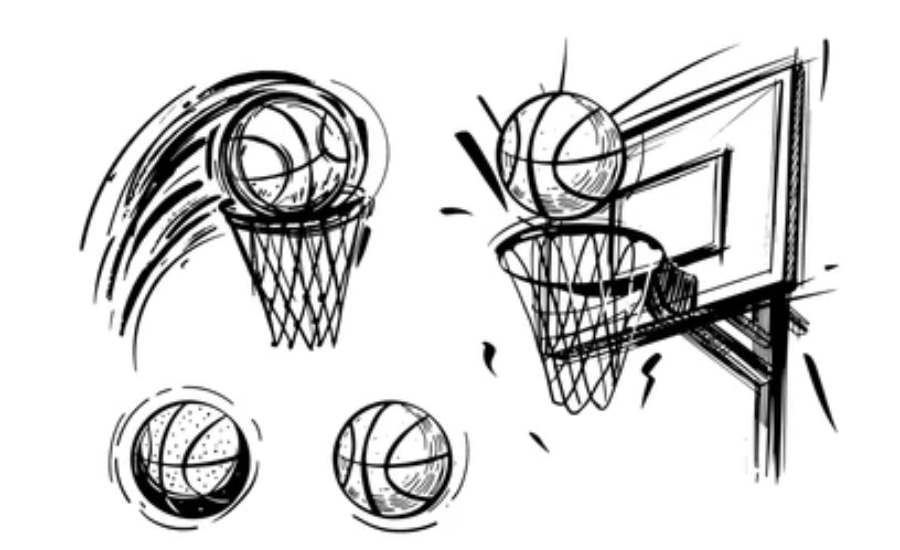
To excel in Drawing:cul23ybyzfm= basketball scenes, it’s important to start with fundamental techniques. Begin by using simple shapes to construct your figures. For instance, use circles to represent heads and joints, and lines for limbs. This basic framework will help you establish the overall structure and pose of your characters.
Maintaining accurate proportions is crucial for achieving realism in your drawings. Pay close attention to the relative sizes and placements of body parts to ensure your figures look natural and lifelike. Practice sketching different basketball poses, focusing on capturing the dynamic movements and unique stances that define the sport.
Another key aspect is understanding the anatomy of the human body, especially in motion. Studying references and observing live basketball games can provide valuable insights into how muscles and joints work together during various actions like dribbling, shooting, and defending.
Once you’re comfortable with basic forms and proportions, you can add layers of detail to your drawings. Highlight muscle definition, clothing textures, and facial expressions to bring your characters to life. Additionally, pay attention to the basketball court environment, including elements like the hoop, backboard, and floor markings, to create a complete and immersive scene.
By consistently practicing and refining these techniques, you can master the art of , capturing the energy, excitement, and complexity of the game in your artwork.
Steps to Drawing a Basketball Court
Creating an accurate Drawing:cul23ybyzfm= basketball court requires attention to detail and understanding of the court’s precise measurements and markings. Here’s a step-by-step guide to help you draw a basketball court correctly:
1. Outline the Court
Start by drawing a large rectangle, representing the court’s outer boundary. Ensure your rectangle is proportionate, typically with a length-to-width ratio of 2:1 (e.g., 94 feet by 50 feet for an NBA court).
2. Add the Center Circle
In the middle of the court, draw a circle to mark the center. The diameter of this circle is usually 12 feet.
3. Mark the Free-Throw Lane
On each end of the court, draw rectangles for the free-throw lanes (also known as the key or the paint). Each rectangle should be 16 feet wide and extend 19 feet from the baseline into the court.
4. Draw the Free-Throw Line
Within the free-throw lane, draw a line parallel to the baseline at the end of the rectangle. This line is 15 feet from the backboard (or baseline).
5. Add the Three-Point Line
From the basket, measure 23.75 feet out (or 22 feet in the corners) and draw an arc connecting the two sides. Ensure the arc is symmetrical and accurately positioned.
6. Indicate the Basket
Draw small circles or rectangles to represent the hoops, positioned 10 feet above the court surface and extending 4 feet from the backboard into the court.
7. Include Other Markings
Add the following additional markings:
- The free-throw circles, with a radius of 6 feet, centered on the free-throw line.
- The restricted area arc under each basket, with a radius of 4 feet from the basket center.
- The baseline and sideline markings, ensuring all lines are clearly defined and proportionate.
8. Fine-Tune and Label
Double-check all measurements and proportions to ensure accuracy. Label key areas such as the three-point line, free-throw line, and center circle to make your Drawing:cul23ybyzfm= basketball court more informative.
By following these steps, you can create a detailed and precise Drawing:cul23ybyzfm= basketball court, capturing all the essential elements required for a realistic representation.
Step-by-Step Guide to Drawing a Basketball Player
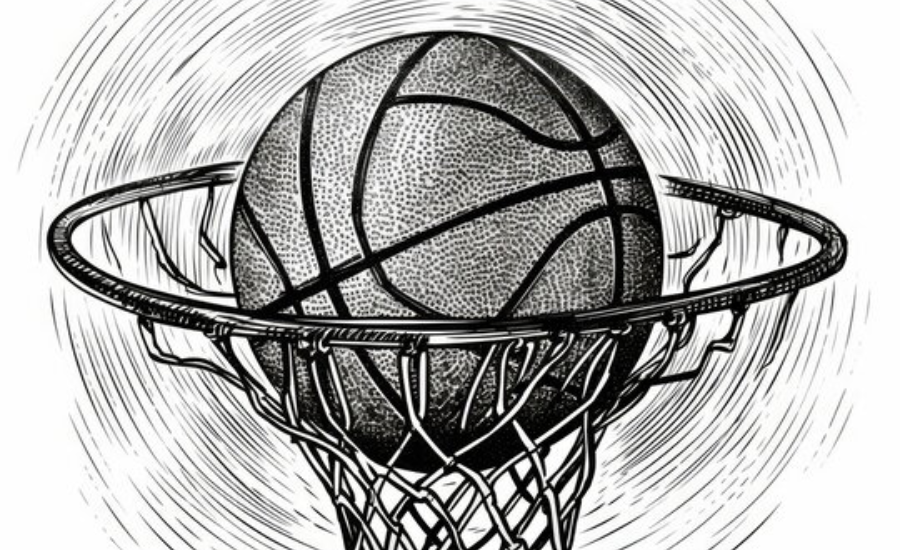
1. Outline the Figure
Begin by sketching a basic outline of the basketball player using simple shapes. Start with:
- Circles for the head and joints (shoulders, elbows, knees, and hips).
- Lines to connect the circles and form the limbs and torso.
- Ovals or rectangles for the torso and limbs to map out the overall proportions and stance.
2. Add Details
Once you have the basic outline, gradually refine your sketch by adding more details:
- Facial Features: Define the face with eyes, nose, mouth, and ears. Consider the player’s expression and focus on capturing their personality.
- Muscle Definition: Sketch the contours of muscles and the natural flow of the body. Pay attention to how muscles contract and expand during movement.
- Clothing Folds: Draw the folds and creases in the player’s uniform to reflect their movement and the texture of the fabric.
3. Refine the Sketch
Clean up your initial lines and make your Drawing:cul23ybyzfm= basketball player more polished:
- Smooth Lines: Erase unnecessary lines and refine the shapes to create a cleaner outline.
- Add Shading: Introduce shading to add depth and dimension. Focus on light sources and how they affect the player’s body and clothing. Use shading to emphasize muscle definition, folds in the uniform, and the curvature of the body.
- Detail the Environment: If applicable, add elements like a basketball, court details, or other players to contextualize the scene.
4. Final Touches
- Highlights and Shadows: Enhance the drawing by adding highlights and shadows, which will create a more three-dimensional effect.
- Review Proportions: Double-check the proportions and adjust as necessary to ensure realism and accuracy.
- Final Cleanup: Go over your drawing to make any final adjustments and ensure everything looks cohesive.
By following these steps, you’ll be able to create a detailed and dynamic Drawing:cul23ybyzfm= basketball player that effectively captures both the essence of the sport and the unique characteristics of the player.
Drawing Basketball Players
Capturing the movement and posture of basketball players is both an exciting and demanding task. To achieve authentic and dynamic drawings, focus on the following aspects:
1. Observe Stances and Actions
Pay close attention to the various stances and actions of basketball players. Whether they are dribbling, shooting, or defending, each position involves unique body movements and angles. Study real-life references or game footage to understand how players move and interact with the ball and opponents.
2. Capture Dynamic Poses
To convey the energy of the sport, draw players in dynamic poses. Use action lines and exaggerated movements to emphasize their athleticism and the flow of the game. Ensure that their body language reflects the intensity and motion inherent in basketball.
3. Include Detailed Uniforms and Gear
Incorporate detailed elements of the players’ uniforms and gear to add realism:
- Jerseys and Shorts: Draw the texture and folds of the fabric, and include team logos or numbers if applicable.
- Sneakers: Illustrate the design and details of basketball shoes, paying attention to how they fit and move with the player’s foot.
- Accessories: Don’t forget to include items such as wristbands, headbands, and knee pads, as these contribute to the player’s overall look and functionality on the court.
4. Add Depth and Realism
Enhance your drawing with shading and highlights to create depth and dimension. Focus on how light interacts with the player’s body and clothing. Shadows and highlights will help convey the three-dimensional aspect of your drawing and bring the scene to life.
5. Refine Details
Review your drawing for any inconsistencies or areas that need improvement. Fine-tune details like facial expressions, muscle definition, and the intricacies of the court environment to make your artwork more compelling and accurate.
By concentrating on these elements, you can create vivid and dynamic drawings of basketball players that capture the essence of their movements and the excitement of the sport.
You may also like: pink:gdxr6qp7qy0= wallpaper
Enhancing Your Skills in Drawing:cul23ybyzfm= basketball
Improving your Drawing:cul23ybyzfm= basketball skills involves dedication and a strategic approach. Here are some key steps to help you enhance your abilities:
1. Practice Regularly
Consistent practice is essential for developing and refining your Drawing:cul23ybyzfm= basketball skills. Set aside time each day or week to work on different aspects of your drawings, whether it’s sketching new poses, refining techniques, or experimenting with different styles.
2. Explore Various Styles
Experiment with different artistic styles and techniques to find what works best for you. Study the work of professional artists who specialize in sports illustrations to gain insights into their approaches and techniques. This exploration can help you develop a unique style and improve your versatility.
3. Learn from Mistakes
Embrace mistakes as valuable learning opportunities. Analyze what went wrong and how you can correct it in future drawings. Understanding and addressing errors will help you grow as an artist and improve your overall skill level.
4. Use References
Incorporate references to ensure accuracy and detail in your drawings. Study photographs, watch games, and observe real-life movements to understand how players move, how uniforms fit, and how light and shadows interact with the body. This attention to detail will enhance the realism and quality of your artwork.
5. Seek Feedback
Share your work with others and seek constructive feedback. Join art communities, participate in critiques, or ask for opinions from fellow artists. Feedback can provide new perspectives and suggestions for improvement.
6. Keep a Sketchbook
Maintain a sketchbook to document your progress and explore new ideas. Use it to practice different techniques, sketch out concepts, and experiment with compositions. Regularly reviewing your sketchbook can show how much you’ve improved and where you might need to focus more attention.
By following these steps, you’ll continually develop your Drawing:cul23ybyzfm= basketball skills, creating more accurate and expressive artworks that capture the essence of the sport.
Leveraging Digital Tools for Drawing Basketball
Digital tools provide a range of benefits for Drawing:cul23ybyzfm= basketball, making the process more flexible and efficient. With software like Adobe Illustrator or Procreate, you can easily make corrections and apply various effects, which can greatly enhance the quality of your artwork. These programs offer precision and versatility, allowing you to experiment with different styles and techniques without the limitations of traditional mediums.
Using digital tablets equipped with pressure-sensitive pens further elevates your work, providing a natural drawing experience with customizable brush settings and real-time feedback. This technology enables you to capture intricate details, adjust line thickness, and apply dynamic shading with ease. By integrating these digital tools into your practice, you can refine your Drawing:cul23ybyzfm= basketball skills and achieve a polished, professional finish in your artwork.
Essential Basketball Skills to Master
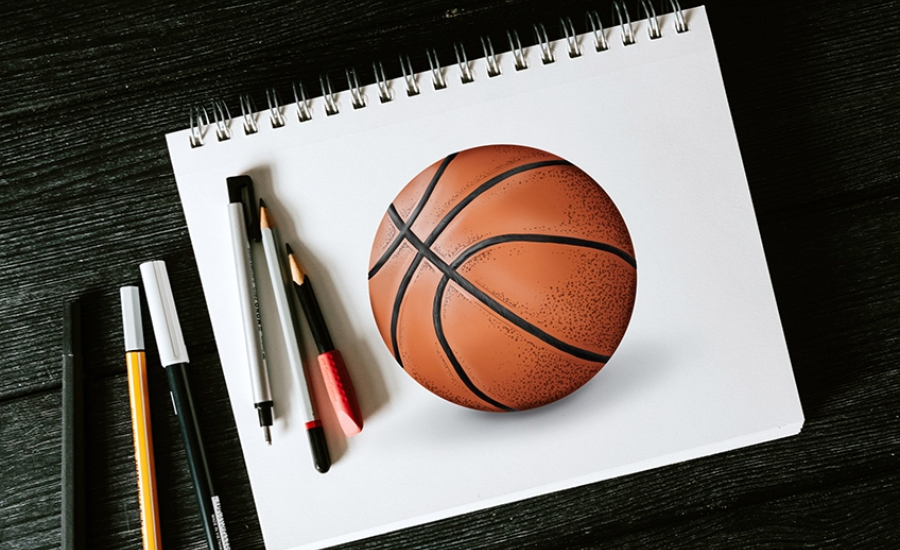
Dribbling Mastery
Dribbling stands as a fundamental pillar of basketball skill. Techniques such as the crossover, behind-the-back dribble, and spin move are vital for making a player unpredictable and challenging to defend against. Mastery in dribbling demands not only control and speed but also the agility to change directions swiftly. Practicing these techniques helps players navigate through defenses and maintain possession under pressure.
Precision in Shooting
Shooting is arguably the most critical skill in basketball. Achieving precision in shooting involves meticulous attention to follow-through, balance, and hand placement. Players like Stephen Curry have transformed the game with their exceptional shooting accuracy and range, setting a new standard for shooters. Developing a consistent shooting technique is essential for scoring and can significantly impact a player’s effectiveness on the court.
Tactical Passing
Effective passing is crucial for fostering team cohesion and creating scoring opportunities. Mastering various passes, such as the bounce pass, alley-oop, and chest pass, enhances ball movement and can dismantle even the most formidable defenses. A deep understanding of when and how to execute these passes can greatly influence a game, making passing a key component of successful teamwork and strategy.
Capturing Action Scenes in Basketball Drawings
Illustrating action scenes in basketball requires a keen ability to capture dynamic movements and convey the sport’s intense energy. To effectively depict these moments:
1. Use Sweeping Lines
Incorporate sweeping lines to represent motion and fluidity. These lines help illustrate the direction and speed of movement, making your drawings feel more dynamic and lively. For instance, curved lines can highlight the arc of a shot or the trajectory of a pass.
2. Emphasize Key Moments
Focus on dramatic moments such as a slam dunk, a fast break, or a three-point shot. Highlight these actions by accentuating the player’s posture and the ball’s position. Capture the height and power of a dunk or the precision of a long-range shot to bring these pivotal moments to life.
3. Detail Facial Expressions and Body Language
Facial expressions and body language are crucial for conveying the intensity of the game. Illustrate players’ concentration, determination, or elation to enhance the emotional impact of your drawing. Subtle details like sweat, tense muscles, or focused eyes can add depth and realism.
4. Showcase the Environment
Include elements of the basketball court, such as the hoop, backboard, and crowd, to contextualize the action. These details help viewers understand the setting and amplify the scene’s excitement.
By focusing on these aspects, you can effectively capture the thrill and energy of basketball in your drawings, bringing the sport’s high-paced action to life.
Essential Tools and Materials for Drawing Basketball
Having the right tools can significantly improve your Drawing:cul23ybyzfm= basketball experience. Start with a range of pencils, from hard (H) to soft (B) grades, to achieve various levels of shading and detail. A good set of erasers will help you refine your work and correct mistakes. Fine liners or inking pens are essential for adding clean, precise lines and details.
Opt for high-quality paper that can handle both erasing and shading without degrading. For more advanced techniques, consider using colored pencils and markers to introduce vibrancy and depth into your artwork. These tools allow you to capture the dynamic colors and textures of a basketball game, enhancing the overall impact of your drawings.
Basketball Icons Through the Ages
Legends from the Past
Michael Jordan and Larry Bird are monumental figures in the history of basketball. Michael Jordan, renowned for his six NBA championships and unparalleled competitive drive, set a standard of excellence that continues to inspire players and fans alike. Larry Bird, with his storied career with the Boston Celtics, was known for his remarkable shooting, strategic playmaking, and fierce rivalry with Magic Johnson. Their achievements and contributions have cemented their legacies as icons and set a high bar for future generations of players.
The Stars of Today
In the modern era, players like LeBron James and Stephen Curry are making a profound impact on the game. LeBron James is celebrated for his extraordinary versatility, athleticism, and leadership on the court, continually redefining what it means to be a great player. Stephen Curry, known for his revolutionary shooting skills and record-breaking three-pointers, has transformed the approach to shooting in the NBA. Both players are shaping the future of basketball, demonstrating exceptional talent and redefining greatness in the sport.
Incorporating Color in Basketball Drawings
Choosing the right colors can elevate your into a vibrant and engaging piece of art. Utilize bold hues for elements such as jerseys and the court to capture the dynamic nature of the game. Ensure that the colors of the uniforms are true to their real-life counterparts to enhance authenticity. Maintain natural skin tones for the players to provide a realistic representation of their appearance.
To achieve smooth transitions and realistic textures, employ techniques like blending and layering. Blending colors can help create soft transitions between shades, while layering different colors can add depth and dimension to your artwork. These techniques will enhance the overall impact of your drawing, making it more visually compelling and lifelike.
Exploring Technological Advancements in Basketball
Training Gadgets
The field of basketball training has undergone a remarkable transformation due to advanced technology. Modern devices, such as shooting machines, are instrumental in enhancing players’ shooting accuracy and consistency through repetitive practice. Wearable fitness trackers have also become essential, providing valuable data on performance metrics and fitness levels. These gadgets offer real-time feedback, enabling players and coaches to tailor training regimens and focus on specific areas for improvement, thereby advancing overall player development.
Tools for Game Analysis
Game analysis tools have dramatically changed how teams and players approach improvement and strategy. Video analysis software allows for a meticulous examination of game footage, offering insights into performance patterns and areas for adjustment. By utilizing cute:bikwq7id6hy= kirby these data-driven insights, teams can refine their strategies, enhance player performance, and gain a competitive advantage. This technology not only helps in identifying strengths and weaknesses but also in devising more effective game plans and making informed decisions during critical moments.
Envisioning the Future of Basketball
Emerging Trends
The future of Drawing:cul23ybyzfm= basketball is being shaped by several exciting trends. One significant development is the rise of positionless play, where players possess a broad range of skills, enabling them to fulfill various roles on the court. This trend emphasizes versatility and adaptability, challenging traditional positional roles. Additionally, the growing reliance on analytics is transforming player evaluation, game strategy, and talent scouting. Technologies such as virtual reality for training and biometric monitoring are set to further elevate player development and performance, offering new ways to enhance skills and track progress.
Forecasts for the Game
As drawing Drawing:cul23ybyzfm= basketball progresses, the sport is expected to experience continued global growth. With an expanding fan base, innovative playing styles, and the emergence of fresh talent, basketball is positioned to captivate audiences around the world. By integrating advanced technologies and embracing emerging trends, the sport will remain vibrant and relevant, reinforcing its reputation as one of the most popular and beloved sports globally.
Wrap up
In summary, Drawing:cul23ybyzfm= basketball offers a rich and dynamic way to capture the excitement and intensity of the sport. From mastering fundamental techniques and incorporating color to leveraging advanced technology and staying abreast of emerging trends, there are numerous ways to enhance your artwork and deepen your understanding of basketball. By continuously practicing, exploring new styles, and utilizing modern tools, you can create compelling and vibrant representations of the game. Embrace the journey, and let your passion for basketball and art drive your creativity to new heights.
Stay informed with us on Info Seeker!




